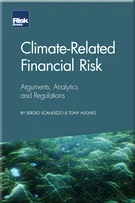Property and casualty insurance risk measurement and management
Introduction
Value-based management
The risk management and capital management frameworks
Credit risk measurement and management
Market risk measurement and management
Property and casualty insurance risk measurement and management
Life insurance risk measurement and management
Operational risk measurement and management
Economic capital
Regulation and regulatory capital
Ratings and rating agency capital
Conclusion: looking backwards and forwards
Acknowledgements
Glossary
6.1 INTRODUCTION
Property and casualty (P&C) insurance risk, also known as general insurance risk or non-life insurance risk, is one of the most important risk categories for P&C insurers or composite insurers and reinsurers. The P&C insurance risk covered in an economic capital model typically includes business that has been underwritten up to the valuation date but not yet fully settled, as well as one year of new business to be underwritten during the one-year risk horizon. Specific risk factors in this category typically include the following.
-
Reserve risk: The risk that the ultimate loss and loss adjustment expense (LAE) exceed the reserve amount accounted for on the current balance sheet. Reserve risk relates to the business written in prior years, where premiums have been collected and invested but the claims have not been fully paid. The objective of traditional reserving is to provide a “best estimate” from among a range of possible estimates to be recorded as a liability on the insurer’s statutory or Generally Accepted Accounting Principles (GAAP) financial statements. The objective of the reserve risk capital calculation is to provide an estimate of the maximum (at the
Copyright Infopro Digital Limited. All rights reserved.
As outlined in our terms and conditions, https://www.infopro-digital.com/terms-and-conditions/subscriptions/ (point 2.4), printing is limited to a single copy.
If you would like to purchase additional rights please email info@risk.net
Copyright Infopro Digital Limited. All rights reserved.
You may share this content using our article tools. As outlined in our terms and conditions, https://www.infopro-digital.com/terms-and-conditions/subscriptions/ (clause 2.4), an Authorised User may only make one copy of the materials for their own personal use. You must also comply with the restrictions in clause 2.5.
If you would like to purchase additional rights please email info@risk.net










